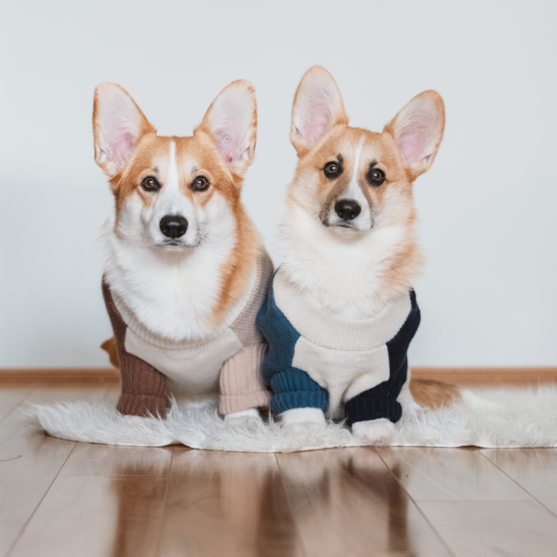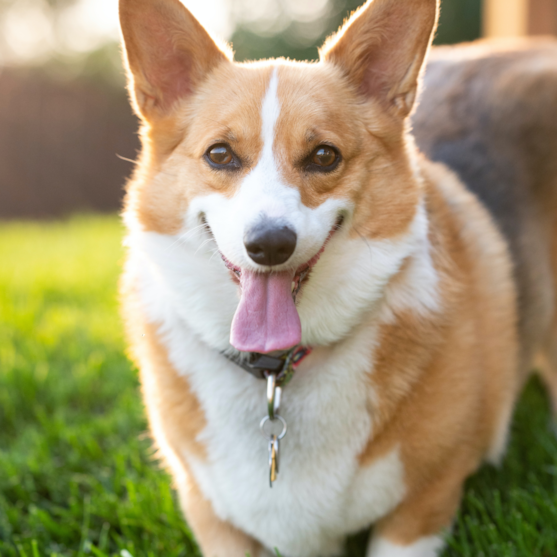Pembroke Welsh Corgi Breed Info


The Pembroke Welsh Corgi is a small herding dog with a big personality. Known for its short legs, long body, and upright ears, this breed combines charm, intelligence, and energy in a compact frame. Originally bred to move cattle across rugged terrain, the Pembroke brings a work ethic that’s still present today—though it’s now more often used to entertain families than corral livestock.
Corgis are loyal and alert, with a cheerful outlook that makes them easy to live with. They’re natural companions who like to be near their people and tend to stay involved in whatever’s happening at home. Whether it’s following you from room to room or lounging in a sunny spot by the window, the Pembroke Welsh Corgi stays close and connected.
Their size makes them adaptable. While originally designed for the countryside, they do just as well in apartments, city homes, or suburban settings—as long as they get enough attention and daily movement. They’re not lap dogs, but they are affectionate, social, and deeply devoted to the people they trust.
Quick to learn and eager to please, Pembrokes respond well to routines and enjoy having a role to play. For families, singles, and anyone looking for a sturdy, loving dog that brings both personality and practicality, the Corgi breedcontinues to be a standout choice.
Characteristics
- Loyal and devoted – Pembroke Welsh Corgis form close bonds with their people and are known for staying nearby, no matter where the day takes them.
- Alert and aware – These dogs have strong observation skills and are quick to notice changes in their environment, making them excellent watchdogs.
- Intelligent and trainable – Corgis are smart and eager to learn. They pick up commands quickly and thrive when training is clear and consistent.
- Confident and bold – Despite their size, Corgis carry themselves with purpose. They’re not shy about expressing themselves and often act like much larger dogs.
- Playful and spirited – They enjoy games, walks, and interactive play, and their energy often surprises people who are new to the breed.
- Sociable – Most Pembrokes enjoy being around people and other pets, especially when socialized early. They’re friendly but still have a strong sense of loyalty to their inner circle.
- Low to the ground, but not slow – With their short legs and long body, Corgis have a distinctive look—and a surprisingly quick and nimble stride.
- Vocal when excited – These dogs aren’t known for being quiet. They tend to bark when something catches their attention or when they’re trying to engage.
- Independent thinkers – They’re clever and resourceful, which means they’re good at solving problems—but also at testing limits if given the chance.

Appearance
The Pembroke Welsh Corgi has a look that’s both distinctive and easy to recognize. Their body is long and low to the ground, supported by sturdy, short legs. This build isn’t just for show—it was designed for agility and control while herding livestock through tight spaces. Despite their compact size, Corgis have a strong, well-balanced frame with plenty of muscle behind their movement.
They usually stand 10 to 12 inches tall at the shoulder and weigh between 24 to 30 pounds, with females often on the lighter end. Their overall shape is rectangular, but not fragile. Corgis carry themselves with confidence and move with surprising speed and coordination, even across uneven terrain.
One of the breed’s defining features is its upright ears—medium-sized, rounded at the tips, and set high on the head. Their eyes are oval-shaped and typically a warm brown, giving them a bright, intelligent expression. The muzzle is tapered, and their face often holds a look of calm attentiveness.
The coat is double-layered: a soft, dense undercoat with a weather-resistant top layer that lies close to the body. This helps protect them from the elements, a nod to their working-dog roots. The texture is firm but smooth, and they shed moderately year-round, with heavier shedding in spring and fall.
Corgis come in several colors, most commonly red, sable, fawn, and black and tan, often with white markings on the chest, legs, neck, and muzzle. Each coat has its own unique pattern, but the breed’s overall outline stays consistent and easy to spot.
Unlike their close cousins, the Cardigan Welsh Corgis, Pembrokes typically have short or naturally bobbed tails. This feature, along with their more refined head shape and lighter frame, helps distinguish them from the Cardigan breed.
Temperament
The Pembroke Welsh Corgi has a bold, curious, and dependable temperament that makes it well-suited to both busy households and quieter homes. Originally bred to herd cattle, they still carry a strong sense of purpose and like to stay involved in whatever’s going on around them. They’re not background dogs—they’re companions who thrive when included.
One of the defining traits of the Corgi personality is their loyalty. These dogs bond closely with their people and often develop a strong attachment to one or two individuals. They follow their favorite humans from room to room, always alert and always ready to join in. That devotion also makes them excellent watchdogs—they’re quick to notice new sounds or unfamiliar faces and won’t hesitate to let you know.
Despite their working background, Corgis are also known for their playfulness. They’re spirited without being hyper, and they love games that involve problem-solving or chasing. Mental stimulation is just as important to them as physical activity, and they’re happiest when their day includes both.
They tend to be confident and expressive, sometimes even a little bossy if boundaries aren’t in place. Early training helps shape that energy into good habits, and they usually respond well to structure. They’re sensitive to tone and enjoy routines that help them feel like part of the family team.
With children, they’re generally patient and affectionate, especially when raised alongside them. Their natural herding instincts may show up in the form of nudging or circling, but this behavior is easily redirected with consistent guidance. Around other pets, Corgis usually do well—though they may try to “manage” them if they’re not given enough direction.
The Pembroke Welsh Corgi temperament blends confidence, charm, and a strong desire to belong. They’re emotionally tuned in, socially smart, and bring a mix of play and steadiness that makes them a well-rounded companion in just about any setting.
Care
Grooming
The Pembroke Welsh Corgi has a thick, double coat that offers good protection from the elements but does require regular upkeep. While they’re not considered high-maintenance dogs, their coat does shed consistently—and more heavily during seasonal changes in spring and fall.
Corgis benefit from brushing at least two to three times a week, especially to manage loose hair and keep the undercoat from becoming matted. During shedding season, daily brushing helps stay ahead of the extra fur and keeps your home cleaner. A slicker brush or de-shedding tool works well to reach through both layers of the coat.
Bathing is only needed every six to eight weeks unless they’ve rolled in something messy. Their coat naturally repels dirt to a degree, and overbathing can strip the oils that help keep their skin and coat healthy. Use a gentle dog shampoo and make sure to dry thoroughly, especially in colder months.
Corgi grooming also includes routine nail trims, ear checks, and dental care. Their ears should be cleaned gently if you notice buildup, and their nails should be trimmed every few weeks to prevent cracking or discomfort. Brushing their teeth a few times a week helps reduce tartar and supports long-term dental health.
While Corgis aren’t known for a strong doggy odor, regular grooming keeps them fresh and comfortable. Some owners choose to visit a professional groomer a few times a year, especially to help with blowouts during high-shedding months.
Exercise Needs
The Pembroke Welsh Corgi may be small in size, but it has the heart and energy of a working dog. Originally bred for herding cattle, this breed is built for movement and thrives with regular activity. They’re happiest when they have both physical outlets and mental stimulation throughout the day.
Most Corgis need at least 45 to 60 minutes of exercise per day. This doesn’t have to be a single long outing—it can be broken into walks, playtime, or short bursts of activity in the yard or at the park. Despite their short legs, they’re quick on their feet and enjoy games that allow them to run, chase, or problem-solve.
In addition to physical movement, Corgis also benefit from mental challenges. Puzzle toys, obedience drills, and simple training games help satisfy their sharp minds and keep them from becoming bored. Left under-stimulated, these dogs may turn to barking, chewing, or herding behaviors inside the home.
Because they’re an active herding dog, Corgis do well in homes where they’re part of the daily routine. Whether it’s a morning walk, some backyard time after work, or a short hike on the weekend, they enjoy being included. They’re adaptable and don’t need a huge yard—but they do need purpose.
Health
The Pembroke Welsh Corgi is a generally healthy and resilient breed with a long history of working in the field. With proper care and attention, most Corgis enjoy a full and active life well into their senior years. While there are a few health concerns to be aware of, responsible breeding and routine care go a long way in supporting long-term wellness.
Corgis may be prone to weight gain if their diet and exercise aren’t balanced. Their sturdy frame makes them look solid, but excess weight puts strain on their joints and spine. Feeding measured portions, avoiding too many high-fat treats, and keeping up with daily activity keeps them at a healthy weight and reduces pressure on their structure.
Regular dental care also supports overall health. Like many small-to-medium breeds, Corgis can develop tartar buildup over time. Brushing their teeth a few times per week and scheduling professional cleanings as needed helps maintain strong teeth and healthy gums.
When raised with awareness and supported by routine veterinary care, the Corgi health profile is reassuring. Most live full, energetic lives and stay active well into their teens. With a little planning and regular care, they tend to be just as steady in health as they are in personality.
Lifespan
The Pembroke Welsh Corgi has a solid reputation as a long-lived, hardy breed. On average, they live between 12 and 15 years, with many staying active and sharp well into their senior years. Their working-dog background plays a part in this resilience—these are dogs bred for endurance, and that quality still shows in how they age.
The Corgi lifespan can be influenced by several factors, including genetics, diet, exercise, and preventive care. Dogs that maintain a healthy weight and stay mentally and physically engaged throughout their lives tend to experience fewer age-related issues and often enjoy better mobility as they grow older.
What stands out about Corgis as they age is their alertness. Even in their later years, they often stay curious, expressive, and tuned in to their people. Their playful spirit may slow down a bit, but their interest in being part of the family usually doesn’t fade. They still follow routines, enjoy gentle walks, and remain affectionate companions throughout their senior stage.
Regular checkups, attention to joint care, and early detection of any health changes help extend not just the length but the quality of life. Many Corgis live comfortably into their mid-teens with minimal issues, especially when raised with good structure from the start.
Training
The Pembroke Welsh Corgi is a quick learner with a strong desire to work alongside its people. Training usually comes easily with this breed, especially when it’s started early and approached with consistency. These dogs enjoy having structure in their day, and they tend to thrive when given tasks, routines, and praise for doing things right.
Because they were originally bred to herd livestock, Corgis have a strong mind and a high level of awareness. That combination makes them excellent candidates for basic obedience, trick training, and even more advanced work like agility or scent detection. They respond especially well to positive reinforcement, such as treats, toys, or enthusiastic praise.
Training a Corgi is less about teaching them what to do—and more about showing them where to direct their energy. They naturally take initiative and often pick up on patterns quickly. That said, they can also test boundaries if left without clear expectations. Keeping sessions short, consistent, and upbeat helps prevent stubborn streaks from taking hold.
Socialization is just as important as obedience. Introducing your Corgi to new sights, sounds, people, and other animals early on helps shape a well-adjusted adult dog. This also helps reduce unwanted behaviors like excessive barking or wariness in unfamiliar settings.
One thing to keep in mind during Corgi training is their natural independence. While they’re eager to learn, they also like to think for themselves. A steady hand and a calm tone make the biggest difference. They’re not overly sensitive, but they do appreciate fairness and clear direction.
History
The Pembroke Welsh Corgi is a breed with deep roots in Wales, where it was originally developed as a herding dog. Its history dates back over a thousand years, making it one of the oldest herding breeds in the British Isles. The Pembroke’s early role was to help move cattle across fields and through tight spaces—tasks that required both agility and intelligence in a compact frame.
The breed’s exact origin is still debated, but many historians believe that the Corgi lineage began when Flemish weavers brought small herding dogs with them to Wales in the 10th century. These dogs were eventually bred with local Welsh herders, leading to the development of the early Corgi types.
By the 19th century, two distinct Corgi breeds had emerged: the Cardigan Welsh Corgi and the Pembroke Welsh Corgi. Though similar in purpose and general shape, they have different ancestral lines. The Cardigan is thought to be the older of the two and descends from the Teckel family of dogs (the same group that includes Dachshunds). The Pembroke, in contrast, is believed to have a closer connection to the Spitz-type dogs brought by the Flemish settlers.
The Pembroke Welsh Corgi was officially recognized as a separate breed from the Cardigan by the Kennel Club in the United Kingdom in 1934. One of the main physical distinctions between the two is the tail—Pembrokes typically have shorter tails, either naturally or due to historical docking practices, while Cardigans have long, bushy tails.
The breed gained international attention in the mid-20th century, thanks in large part to its association with the British royal family. Queen Elizabeth II received her first Pembroke Corgi, named Dookie, in 1933, and went on to own more than 30 throughout her lifetime. This connection helped raise global awareness of the breed and remains part of its identity today.
Despite their rise in popularity as companion animals, Pembrokes remain true to their working-dog roots. Their structure, instincts, and temperament still reflect the qualities that made them effective on the farm.
